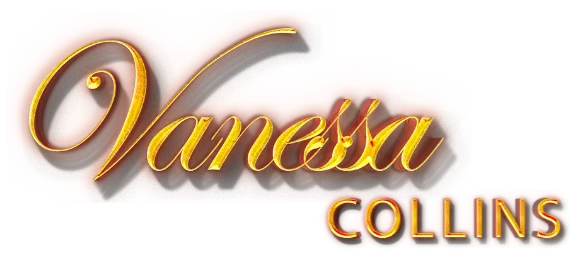BLOG

Episode 5: Finding & Attracting Your Ideal Audience (Even If You’re Starting from Scratch)
We are starting a 2-part series on How to Build an Engaged Audience. Today we will discuss finding and attracting your ideal audience. Next week we will explore keeping them engaged.
Now, notice I didn’t just say ‘getting followers’ or ‘growing your list.’ Because here’s the thing—a large audience means nothing if they’re not engaged. You don’t need 100,000 followers to have a profitable business. You just need the right audience who actually connects with you and what you offer.
So if you’re starting from scratch or struggling to grow an audience that actually interacts with your content, don’t worry—you’re in the right place. Grab your notebook, because I’m about to share my best strategies to help you attract, engage, and build a loyal community of potential clients, customers, and superfans!
Why Engagement Matters More Than Numbers
Let’s get one thing straight—vanity metrics won’t pay your bills. You don’t need a million followers; you need an audience that’s actually listening, interacting, and taking action on what you share.
Think about it: would you rather have 1,000 followers where only 10 engage with your content, or 500 highly engaged followers who comment, share, and buy from you? That’s the power of engagement.
How to find and attract your ideal audience—without wasting time on the wrong people!
If you’ve ever felt like you’re talking to the wrong crowd, struggling to get engagement, or wondering where your audience even is, you are not alone.
We’re breaking this down into four actionable steps so you can stop spinning your wheels and start connecting with the people who actually need what you offer!
Step 1 – Clarify Your Message
Before you can find your audience, you need to get crystal clear on who you serve, what problem you solve, and what transformation you provide. If your messaging is too vague or broad, people won’t know if you’re the right fit for them. Let’s fix that!
Define Your Core Message
Before you try to attract an audience, you need to be crystal clear on what you stand for. Your message should answer three key questions:
Who do you help?
Be specific: What is their age, profession, mindset, and struggles?
Instead of: “I help entrepreneurs.”
Say: “I help entrepreneurs over 50 use digital marketing to grow their business without tech overwhelm.”
What problem do you solve?
What are their biggest challenges and frustrations?
Example: “Many entrepreneurs over 50 struggle to create consistent content because they feel overwhelmed by technology.”
What transformation do you provide?
How will their life or business improve after working with you?
Example: “I help them build a simple, repeatable content strategy so they can attract their ideal clients and grow their business.”
Pause for a moment and think about these three questions. Write down your answers in one or two sentences. If you can’t explain who you help and what you do in a clear, simple way, it’s time to refine your message!
Create Your Audience Connection Statement
Now that you know who you help, what problem you solve, and what transformation you provide, let’s craft a simple, compelling message that attracts your audience.
Formula:
“I help [WHO] achieve [RESULT] without [COMMON OBSTACLE].”
Examples:
“I help authors turn their books into profitable businesses without feeling overwhelmed by marketing.”
“I help entrepreneurs over 50 use AI and automation to grow their business without spending hours on social media.”
Here’s an Audience-Building Exercise for you:
Exercise 1: The “Who, What, How” Clarity Test
Try writing your own audience connection statement using this formula. Keep it short and to the point. If people immediately say, 'That sounds like me!'—you know you’ve nailed it!
Make Your Message Stick with the 3 C’s
· Your message should be:
Clear – No industry jargon. Use simple, direct language.
Concise – Can you explain it in one or two sentences? If it takes five minutes, it's too complicated.
Compelling – Why should people care? What makes your message stand out?
Example of a weak message:
"I help people with social media and content marketing."
Example of a strong message:
"I help entrepreneurs over 50 create consistent content and grow their audience without feeling overwhelmed by tech."
Look at your messaging. Is it clear, concise, and compelling? If not, tweak it today!
Align Your Message with Your Content Strategy
Once you’ve clarified your message, every piece of content you create should reinforce it. Here’s how:
Social Media Posts → Share tips, stories, and case studies that reflect your core message.
Email Marketing → Provide insights and solutions tied to your message.
Live Videos/Podcasts → Speak directly to your audience’s struggles and offer actionable steps.
If your message is clear and consistent, the right people will start to notice, engage, and follow you.
Step 2 – Find Out Where Your Audience Hangs Out
Now that you have clarity on your message, the next question is: Where do you find your ideal audience?
The Social Media Match Guide
Facebook → Great for community-building, Facebook Groups, and engagement.
Instagram → Perfect for personal branding, visuals, and short-form content.
LinkedIn → Ideal for professionals, B2B entrepreneurs, and high-value networking.
YouTube → Best for tutorials, long-form educational content, and brand authority.
TikTok → Great for quick, engaging, and entertaining content.
Pinterest → Powerful for evergreen content like blog traffic and DIY inspiration.
Email Marketing → The most important because YOU own your email list!
Think about your business. Where do you believe your audience is spending the most time? Pick one platform to focus on and start engaging there!
Spend 10 minutes today researching where your audience is already engaging and take notes on the most common questions they ask!
Step 3: Use Lead Magnets to Pull People In
Finding your audience is only the first step—you also need a way to capture their interest and bring them into your world. The best way to do that? A lead magnet.
What Makes a Good Lead Magnet?
A great lead magnet should:
Solve a specific problem.
Be quick and easy to consume.
Lead naturally into your paid offers.
Examples of High-Converting Lead Magnets:
Checklists & Cheat Sheets → Quick, actionable guides (“10-Step Checklist for Writing Your First Book”).
Guides → Short, valuable resources (“The 7-Day Social Media Plan for Coaches & Authors”).
Mini Video Trainings → Quick 5-10 min tutorials (“How to Grow Your Email List in 30 Days”).
Quizzes & Assessments → Interactive engagement (“What Type of Digital Product Should You Create?”).
If you don’t have a lead magnet yet, brainstorm one today! What’s a small, valuable resource you can offer?
Step 4: Use the Power of Storytelling
It has been said that people don’t buy products. They buy stories, connection, and transformation. If you want to attract and engage your audience, you need to start using storytelling!
3 Types of Stories to Use in Your Content
Your Origin Story ("Why I Do This")
Format:
"I used to struggle with [problem], but I discovered [solution]. Now, I help [audience] achieve [result]."
Example:
"Before I figured out digital marketing, I wasted hours creating content that no one saw. Now, I teach entrepreneurs over 50 how to grow their audience without tech overwhelm!"
Write your origin story in 3-4 sentences and share it!
The Client Success Story
Format:
"I worked with [client name], who struggled with [problem]. After working together, they achieved [transformation]."
Example
I worked with Jacqueline, who struggled with writing her book. After working together, Jacqueline has not only written 7 books, she has also created online programs based on her books.
Do you have a success story from a client or yourself? Share it!
The "Common Mistakes" Story
Format:
"I used to think [common mistake] was the way to go, but then I realized [insight]. That changed everything!"
Example
“I used to think paying thousands of dollars every month for dozens of software platforms was the only way to have an online business that worked. But then I discovered GoHighLevel and that changed everything!"
Think about a mistake your audience is making right now and use it to tell a story!
Quick recap!
Clarify Your Message – Who you help, what problem you solve, and your unique transformation.
Find Your Audience – Choose the right platform for engagement.
Use Lead Magnets – Offer a valuable freebie to capture interest.
Tell Stories – Connect, engage, and build trust through storytelling.
Final Action Step:
Choose ONE of these four strategies and implement it this week!
Now that you know how to attract an audience, how do you KEEP them engaged? That’s what we’re covering in the next episode!
Copyright 2023 Vanessa Collins. All rights reserved.

